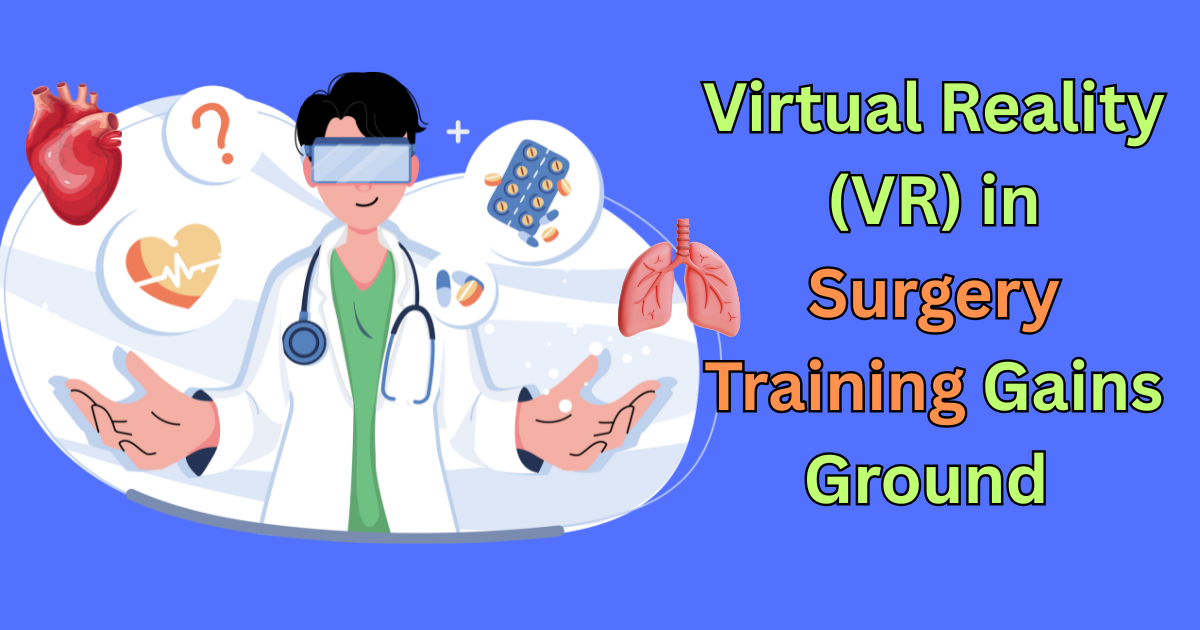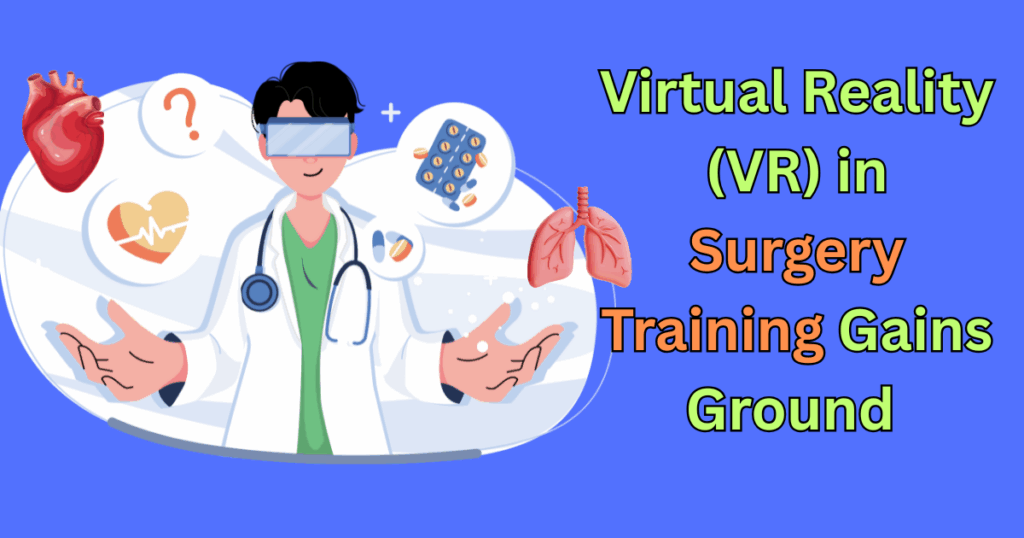Virtual Reality (VR) in Surgery Training Gains Ground in Indian Medical Colleges: Virtual reality (VR) is revolutionizing medical education and surgical training by offering an immersive, risk-free environment for trainees. With advancements in technology, VR has moved from simple visualization tools to the interactive platforms that provide real-time feedback.
Virtual Reality (VR) in Surgery Training Gains Ground
The traditional surgical training has constantly changed, as it is the recurrently resisted concerns of patients’ safety, the cost of the operating room, and complications all over the world. Virtual reality training allows all the surgeons in the hospital to achieve skills in less time before operating on any patients.

The purpose of the study is to create awareness of virtual reality in India. Surgical training institutes. The approaches of constant innovation and ongoing progress from the experience retrieved from virtual reality training from different fields might provide the strong substructure for the next generation to reduce errors in surgical training.
On Friday, a software simulation company, Medisim VR, tied up with Shri Ramchandra Institute of Higher Education and Research to establish medical students, nursing students and healthcare professionals, as well as professionals from other medical colleges across Chennai, said university vice chancellor Dr. Uma Sekar.
For Surgeons
Surgeons can experience being in a real operating room while having the ability to clearly see the environment through a VR headset and even interact with it using manual controls. These controls simulate real medical instruments and allow students to operate on the patient virtually, which improves the accuracy of their movements.
For Students
The VR surgical simulator comes with a unique pod that allows the students to interact with the computer-generated three-dimensional model through tactile instruments.
These devices provide the practitioner with visual, tactile, force, and acoustic feedback on their every movement. It helps in reducing stress while practicing.
Benefits of VR in Surgery Training
- Training Sans Risk
Advanced techniques such as laparoscopic procedures and robotic surgeries require a specific set of skills; moreover, they require real-life scenarios to be practiced upon. The variables in the traditional surgery practice settings However, with VR surgery training, this is possible.
- Real-Time Analysis
Being able to practice in a safe environment is complemented by the ability to get instant feedback. User movements, time spent, and choice inputs can be transmitted to the tutor in real time. This makes evaluation more objective
The former benefit is the one that is driving the current change. Being able to perform lifelike surgeries in a consequence-free environment is a testament to the future of the tech in surgical VR training practices. It is precisely due to this factor that a lot of key industry players are currently adopting this tech.
How VR makes surgery Training Better
VR technology brings many benefits to the healthcare and surgical industry. A recent study has shown that using virtual reality for surgical training can reduce both operation time and error rates, as well as increase accuracy, compared with traditional endoscopic training. VR technology offers new possibilities in surgical training that are not available with the standard text-based and video training materials.
Earlier, a surgeon needed at least 10 to 20 practices to reach optimum efficiency. However, recently, with the development of newer technology and advanced machines, a medical student needs an average of 50 to 100 surgeries to be called an expert.
Exploring Characteristics of VR in Medical Training
- Immersive Environments: VR combines technology to transport learners to realistic medical scenarios, providing immersive training experiences.
- Realism Beyond Limits: VR enables hands-on practice in surgical procedures, anatomical exploration, and more, transcending physical boundaries.
- Enhanced learning: VR goes beyond traditional methods, allowing learners to experience the nuances of medical practice, from emergency room tension to surgical precision.
- Interactivity: Hand controllers promote skill development through tactile experiences and interactive learning.
- Safe learning: VR provides a risk-free environment for learners to make and learn from mistakes, enhancing their performance.
Conclusion
In this article we discussed virtual reality (VR) in surgery training gaining ground in Indian medical colleges: The purpose of the study is to create awareness of virtual reality in India. Surgical training institutes. VR technology brings many benefits to the healthcare and surgical industry. With advancements in technology, VR has moved from simple visualization tools to the interactive platforms that provide real-time feedback.





